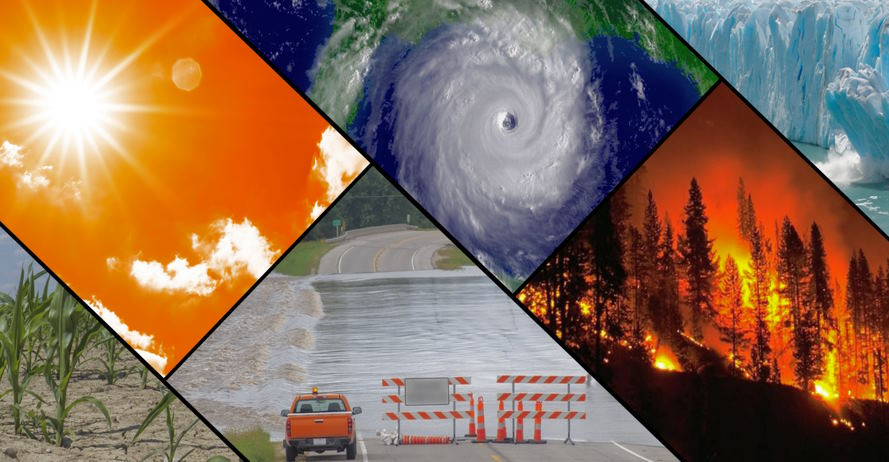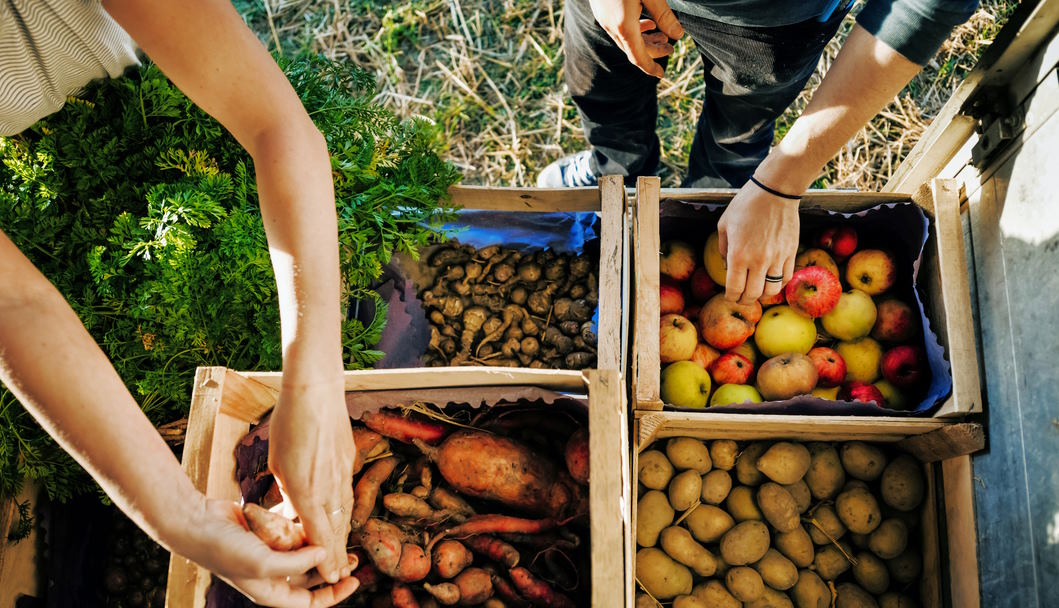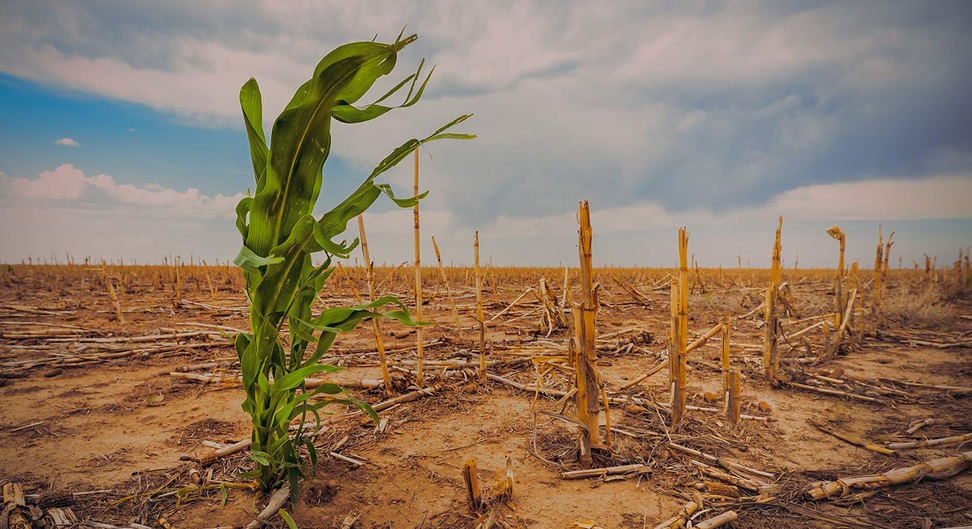The global food crisis has emerged as one of the most pressing challenges of our time, impacting millions of people worldwide. While various factors contribute to this crisis, climate change has become a significant driver, exacerbating food insecurity and threatening agricultural systems. As temperatures rise, weather patterns become erratic, and extreme events become more frequent, the ability to produce and access sufficient and nutritious food becomes increasingly precarious.
The Impact of Climate Change on Food Production
Changing weather patterns and extreme events:
Climate change is causing significant disruptions in weather patterns around the world. Rising global temperatures are leading to more frequent and intense heatwaves, droughts, floods, and storms. These extreme weather events have severe consequences for agricultural production. Heatwaves and droughts can scorch crops and deplete soil moisture, making it challenging for plants to thrive. Floods, on the other hand, can wash away valuable topsoil and drown crops. These changing weather patterns not only affect the quantity of food produced but also impact its quality, nutritional value, and taste.
Disruption of agricultural systems:
The traditional agricultural systems that have sustained communities for generations are being disrupted by climate change. Shifts in rainfall patterns and temperature regimes alter the suitability of certain regions for specific crops. Areas that were once ideal for agriculture may become too hot, dry, or prone to pests and diseases. This forces farmers to adapt or abandon their traditional crops and farming practices, leading to economic instability and food insecurity.
Decline in crop yields and quality:
Climate change poses a significant threat to crop yields and quality. Rising temperatures and changing precipitation patterns disrupt the delicate balance required for optimal plant growth. Prolonged heat and drought stress crops, reducing their productivity and diminishing yields. Furthermore, elevated carbon dioxide levels in the atmosphere can reduce the nutritional content of crops, such as essential minerals and vitamins. These factors collectively contribute to a decline in crop quality and pose risks to human health.
Impacts on livestock and fisheries:
Climate change not only affects crops but also has far-reaching consequences for livestock and fisheries. Extreme heat stresses livestock, leading to reduced weight gain, decreased milk production, and increased susceptibility to diseases. Changes in precipitation patterns can also impact forage availability, leading to food shortages for animals. In aquatic ecosystems, rising ocean temperatures and acidification negatively affect marine life, including fish populations. This disruption in the balance of marine ecosystems threatens the livelihoods of fishermen and the availability of fish as a crucial source of protein.

Adaptation Strategies for Food Security
Crop diversification and resilient varieties:
One key adaptation strategy for ensuring food security in the face of climate change is crop diversification. By cultivating a variety of crops, farmers can reduce their dependence on a single crop and mitigate the risks associated with changing climate conditions. Diversification also involves the use of resilient crop varieties that are better adapted to withstand heat, drought, pests, and diseases. These varieties have traits that enable them to thrive in challenging environments, ensuring a more stable and reliable food supply.
Improving water management and irrigation practices:
Water scarcity is a significant concern in many regions, exacerbated by climate change. Enhancing water management and irrigation practices is crucial for adapting to changing rainfall patterns and optimizing water use in agriculture. This includes investing in efficient irrigation systems, such as drip irrigation, that deliver water directly to plant roots, minimizing waste. Implementing water-saving techniques like rainwater harvesting and using water-efficient technologies can help farmers cope with water shortages and maintain crop productivity.
Enhancing soil health and fertility:
Healthy soils are the foundation of sustainable agriculture and essential for maintaining food security. Climate change impacts soil quality through increased erosion, nutrient depletion, and degradation. Enhancing soil health involves practices like organic matter incorporation, cover cropping, and conservation tillage. These practices improve soil structure, water retention, and nutrient availability, making crops more resilient to climate stressors.
Promoting sustainable farming techniques:
Adopting sustainable farming techniques is critical for adapting to climate change and ensuring long-term food security. This includes practices such as agroforestry, which combines trees with crops or livestock, providing multiple benefits like shade, carbon sequestration, and erosion prevention. Other techniques include integrated pest management, which minimizes chemical pesticide use, and precision agriculture, utilizing technology to optimize resource efficiency. Sustainable farming techniques promote ecological balance, conserve resources, and enhance resilience to climate impacts.
Strengthening early warning systems:
Early warning systems play a crucial role in mitigating the impacts of climate change on food security. These systems utilize climate data, satellite imagery, and predictive models to forecast extreme weather events, pest outbreaks, and disease outbreaks. By providing timely information to farmers and policymakers, early warning systems enable proactive decision-making, allowing for the implementation of appropriate adaptation measures. Strengthening and expanding these systems can significantly reduce the vulnerability of agricultural systems to climate-related risks.

Innovations and Technological Solutions for Climate-Resilient Agriculture
Climate-resilient seeds and genetic engineering:
One of the most promising innovations in agriculture is the development of climate-resilient seeds. These seeds are bred or genetically modified to withstand the challenges posed by climate change, such as heat, drought, pests, and diseases. By incorporating traits like drought tolerance, disease resistance, and high heat tolerance, these seeds offer farmers a valuable tool for adapting to changing climate conditions. Genetic engineering techniques, such as gene editing, also hold promise for developing crops with enhanced resilience. These innovations have the potential to revolutionize agriculture and contribute to long-term food security.
Precision agriculture and data-driven farming:
Precision agriculture utilizes advanced technologies, such as GPS, sensors, drones, and satellite imagery, to optimize resource use and maximize crop productivity. By collecting and analyzing data on soil conditions, weather patterns, and crop growth, farmers can make informed decisions about irrigation, fertilizer application, and pest management. This data-driven approach improves efficiency, reduces input waste, and minimizes environmental impact. Precision agriculture empowers farmers to adapt to climate change by providing real-time information and enabling precise, targeted actions.
Vertical farming and urban agriculture:
Vertical farming and urban agriculture are innovative solutions that address the challenges of limited arable land and urbanization. Vertical farming involves cultivating crops in vertically stacked layers, often in controlled indoor environments. This approach optimizes space utilization and allows year-round production in urban areas. Urban agriculture encompasses various practices, including rooftop gardens, community gardens, and hydroponics. These localized food production systems reduce the need for long-distance transportation, improve food access, and minimize the carbon footprint of food production.
Improved storage and post-harvest management:
A significant portion of the world’s food is lost or wasted due to inadequate storage and post-harvest management practices. Climate change can exacerbate these challenges, as extreme weather events and changing temperature and humidity conditions affect the shelf life and quality of harvested crops. Innovations in storage technologies, such as hermetic storage bags and controlled atmosphere storage, help extend the shelf life of perishable goods. Additionally, post-harvest management techniques, including proper handling, drying, and processing, minimize post-harvest losses and preserve nutritional value.
